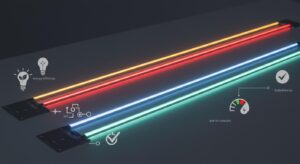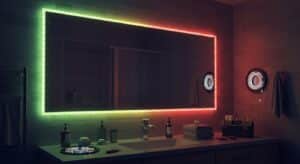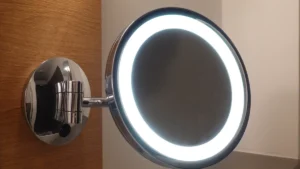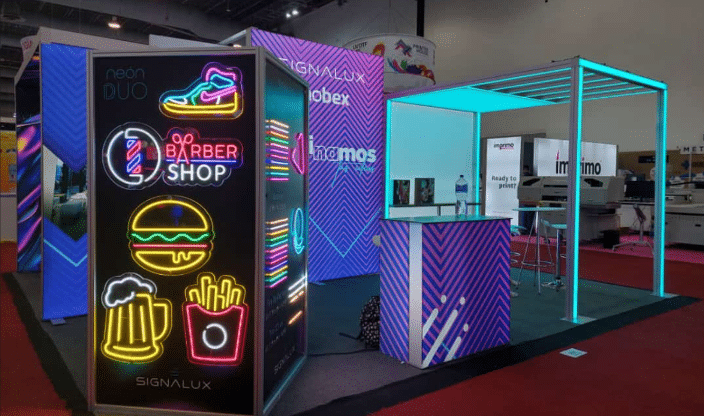
Lighting is key to making your exhibition booth noticeable. Good exhibition booth LED strip lights can change your booth’s look. They grab attention and leave a lasting impression on visitors. Research shows backlighting boosts focus on brand messages by 40%. This makes it great for getting noticed. Pick exhibition booth LED strip lights based on brightness, colors, and strength. These features make your booth look good and attract people.
Key Takeaways
Pick LED strip lights with 450 lumens per foot or more. This makes your booth bright and grabs attention.
Think about the color temperature of the lights. Warm lights feel cozy, while cool lights look modern and sharp.
Choose high-density LED strips for smooth, even lighting. These work well for bright spaces and detailed setups.
Get outdoor-rated LED lights for strong and lasting use. They handle tough conditions and work great indoors too.
Use online tools or ask lighting experts for advice. This helps you pick the right lights for your booth’s needs.
Key Things to Think About for Booth LED Strip Lights
Brightness and Light Output
Why brightness is important for booths
The brightness of LED lights affects how people see your booth. Good lighting makes your booth clear and grabs attention. But too much brightness can be harsh and distract from your message. Experts say balancing brightness with layout and colors creates a welcoming space.
What lumens and LED density mean
When checking brightness, look at lumens and LED density. Lumens show how much light is given off. Booth lights should have at least 450 lumens per foot. LED density, or LEDs per foot, helps avoid dark spots. A higher density, like 36 LEDs per foot, gives smooth, even light. The table below explains key points:
Factor | What It Means |
|---|---|
Brightness | Good strips give 450 lumens per foot, like normal lights. |
LED Density | More LEDs (e.g., 36 per foot) give smooth light with no gaps. |
Power Use | Quality strips use 4 watts per foot or more, affecting energy costs. |
Color Choices and Temperature
Warm vs. cool light for booth vibes
The color of your LED lights sets the booth’s mood. Warm lights (2700K-3000K) feel cozy and are great for handmade or fancy items. Cool lights (4000K-5000K) look sharp and work well for tech or modern styles.
RGB and tunable white for more options
For flexibility, try RGB or tunable white LED lights. RGB lights let you change colors, making displays pop. Tunable white lights let you switch between warm and cool tones to match your booth’s theme or time.
Strength and Quality
Waterproof and strong materials for lasting use
Strong LED lights are important if you’ll reuse them. Pick waterproof ones made with tough materials to handle wear. Good circuit boards with enough copper (at least 2 oz) last longer and work better.
Why good LED chips matter
The quality of LED chips affects how bright and steady the lights are. High-quality chips are tested to ensure they work well. Better LED strips also have coatings that make light brighter and colors clearer, helping your booth stand out.
Installation and Compatibility
Adhesive vs. bracket mounting options
You can install LED strip lights using adhesive or brackets. Adhesive strips are easy and quick to use. They have a peel-and-stick design for smooth surfaces like walls or counters. This is great for temporary booths when time is short. But, adhesive strips may not stick well on rough or dusty areas. Over time, they might lose their hold.
Bracket mounting is stronger and lasts longer. Small brackets or clips keep the strips in place securely. This is best for permanent or reusable setups. Brackets make it easy to move or replace strips without damage. Though it takes more effort to install, it stays reliable for a long time.
Plug-and-play vs. hardwired systems
Plug-and-play systems are simple and fast to set up. They come with pre-connected parts like controllers and power supplies. You just plug them into an outlet. This is perfect for beginners or quick setups without complex wiring.
Hardwired systems are more advanced and customizable. They connect directly to your booth’s electrical system for a clean look. These are great for big booths or setups needing special lighting controls. But, they often need professional help and knowledge of voltage and compatibility. Clear instructions and support can make the process easier.
Tip: Check your booth’s layout and the type of LED strip lights you want. This helps you pick the right system and avoid problems during setup.
Comparing Types of Exhibition Booth LED Strip Lights
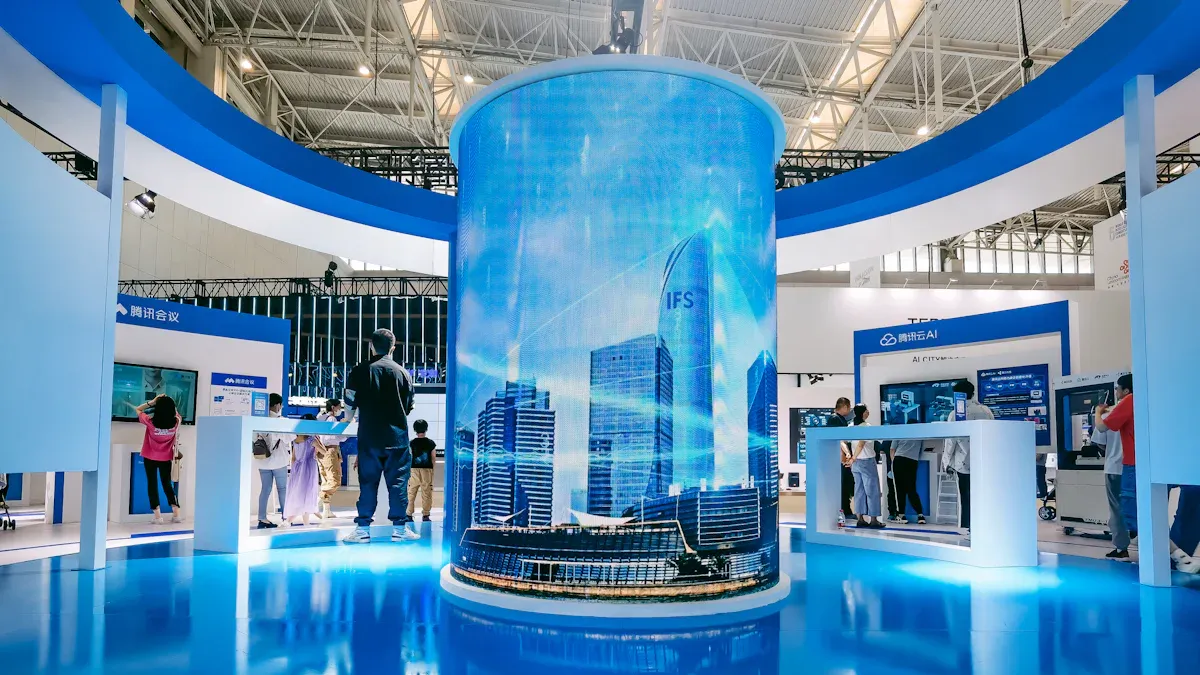
RGB LED Strip Lights
Why color-changing lights are useful
RGB LED strip lights can change colors to make displays exciting. They mix red, green, and blue to create many colors. You can use controllers to change brightness, colors, or patterns. This makes them flexible and fun for booths. RGB lights save energy and work well in many setups. Studies show RGB 5050 strips are brighter and more colorful than smaller 3528 strips. The table below explains the differences:
LED Type | Size (mm) | Brightness | Best Use Cases | Color Variations |
|---|---|---|---|---|
3528 | 3.5 x 2.8 | Lower | Accent lighting, TV backlighting | Single color only |
5050 | 5.0 x 5.0 | Higher | RGB lighting, high ambient light areas | Millions of variations |
Best ways to use RGB lights in booths
RGB LED lights are great for booths that need to stand out. They work well for tech brands, gaming setups, or modern products. Use them to light up key areas or add fun effects. For example, RGB 300 Color Changing strips are popular for bright accents. The chart below shows their high ratings:

Tunable White LED Strip Lights
Why adjustable color temperature is helpful
Tunable white LED lights let you change the light’s warmth or coolness. Warm tones (2700K) feel relaxing, while cool tones (6000K) help people focus. These lights save energy and can improve visitors’ mood and attention. Research shows cooler tones boost alertness, while warmer tones create calmness.
Where tunable white lights work best
Tunable white lights are great for booths needing both comfort and professionalism. They fit well in art galleries, healthcare setups, or booths with changing moods. Use cool tones during busy times to energize visitors. Switch to warm tones later to create a relaxed vibe.
High-Density LED Strip Lights
Why high-density strips are useful in bright areas
High-density LED strips give smooth, even light with no dark spots. They are brighter than regular strips, making them good for bright spaces. These strips use more power, which can raise costs, but they ensure consistent lighting.
When to pick high-density over regular strips
Choose high-density strips for booths in bright areas or needing detailed lighting. They are perfect for jewelry displays, luxury retail, or precise lighting setups. Regular strips work for simple accents, but high-density ones make your booth shine in competitive spaces.
Outdoor-Rated LED Strip Lights
Strong features for tough conditions
Outdoor-rated LED strip lights are built to handle bad weather. They have high IP ratings, like IP65, to block dust and water. This keeps them working even in rough environments. These lights use tough materials that last a long time. Protective coatings keep the inside parts safe from harm. This helps the lights stay bright and work well over time.
For exhibition booths, these strong lights mean fewer replacements and less upkeep. You can trust them to light up your booth during events. Their toughness makes them great for booths you plan to use again.
Using outdoor lights indoors
Even though outdoor-rated LED lights are made for outside, they work well indoors too. Their IP65 rating protects them from dust and water spills during setup or cleaning. This makes them a smart choice for indoor booths.
These lights give steady brightness and colors, even in busy areas. Their weatherproof design keeps them working and looking good. They are perfect for booths with detailed designs or lots of visitors. Plus, their long life means you won’t need to replace them often, saving time and effort.
When picking LED strip lights for your booth, think about outdoor-rated ones. They are strong, flexible, and make your booth look great while lasting a long time.
How to Pick the Best LED Strip Lights for Your Booth
Understanding Your Booth’s Lighting Needs
Questions about booth size and layout
First, think about your booth’s size and shape. Measure where you’ll place the lights. Check for tricky spots like curves or tight corners that might make setup harder. If your booth is outside or in a busy area, think about dust or moisture. These details help you pick the right type and length of LED strip lights.
Deciding the purpose of your lighting
Figure out why you need the lights. Accent lighting makes certain products or areas stand out. Task lighting helps with activities like showing products or working. Ambient lighting sets the mood and makes your booth feel welcoming. Knowing your goal helps you choose lights with the right brightness and color.
Tip: Follow these steps to plan your lighting:
Decide if you need lights for mood, tasks, or decoration.
Measure your booth and think about the environment.
Match features like brightness and strength to your needs.
Plan where to place lights and how to connect them.
Comparing Light Features
Looking at brightness, power, and energy use
When choosing LED lights, check brightness, power use, and energy savings. Brightness is measured in lumens—pick at least 450 lumens per foot for good lighting. Power use, shown in watts, tells you how much energy the lights need. Energy-saving lights cost less to run and are better for the planet. Look for lights with high brightness but low energy use.
Making sure lights work with controllers
Check if the lights work with controllers and dimmers. Controllers let you change colors, patterns, and brightness. Dimmers help you adjust how bright the lights are. Read the product details to make sure they fit your booth’s setup. This avoids problems and makes sure everything works smoothly.
Thinking About Costs
Balancing price with quality
It’s important to find lights that are both good and affordable. LED lights might cost more at first, but they last longer and save energy. This means you’ll spend less on repairs or replacements. Some programs offer discounts or tax breaks to help with the cost.
Tips for finding good lights at a fair price
To save money, compare trusted brands and read reviews. Look for deals on bundles or bulk buys. Focus on must-have features like brightness and durability. Skip extras you don’t need to stay within your budget.
Note: Spending more on quality lights now can save money later because they last longer and use less energy.
Using Tools and Asking Experts
Why online tools are helpful
Online tools make picking LED strip lights easier. They let you compare many products quickly. You can check brightness, colors, and energy use all in one spot. Most tools also show reviews and ratings from other users. These reviews help you learn if the lights work well and last long.
Using these tools helps you choose wisely. For example, you can find lights that match your booth’s needs, like waterproof ones or RGB lights. Some tools even show how much energy you can save. This helps you pick lights that are good for your budget. By using these tools, you avoid buying the wrong lights.
Tip: Use tools with detailed info and real customer reviews. This helps you trust the details and make better choices.
Why talk to lighting experts
Sometimes, tools don’t answer all your questions. Talking to a lighting expert can give you advice just for your booth. Experts look at your booth’s size, goals, and needs. They suggest the best LED lights to make your booth look great.
Experts also help with tricky setups, like hardwired systems or special controllers. They make sure everything works well and fits together. If your booth has tough spots, like odd shapes or bright areas, they can find smart solutions.
Note: Contact experts early when planning your booth. This gives you time to follow their advice and set up your lights right.
Picking the right LED strip lights makes your booth noticeable. Brightness, colors, and strength are key for a great display. Lights affect the booth’s mood and how people see your brand. Think about lighting with your booth’s size and colors. Use online tools to compare features or ask experts for help. Make a list to check LED density, color options, and controls. This helps you choose lights that look good and fit your budget.
FAQ
What is the best brightness for booth LED strip lights?
Pick LED strips with at least 450 lumens per foot. This gives enough light to make your booth look great. In bright areas, use high-density strips for even lighting.
Can outdoor-rated LED strip lights be used inside?
Yes, you can use outdoor-rated LED lights indoors. They are tough and protect against dust and spills. This makes them perfect for busy booths and long-term use.
How do I decide between RGB and tunable white LED lights?
RGB lights are great for colorful, eye-catching effects. Tunable white lights let you change between warm and cool tones. Think about your booth’s style and mood when choosing.
Are adhesive LED strips good for temporary booths?
Adhesive LED strips are easy to set up and great for short-term use. But they might not stick well on rough or dusty spots. For stronger hold, try bracket-mounted strips.
Do LED strip lights use less energy than regular lights?
Yes, LED strip lights save energy and use less power. They are bright but cost less to run than regular lights. Look for energy-saving labels to ensure efficiency.
Tip: Check product details for energy ratings to save more money.
